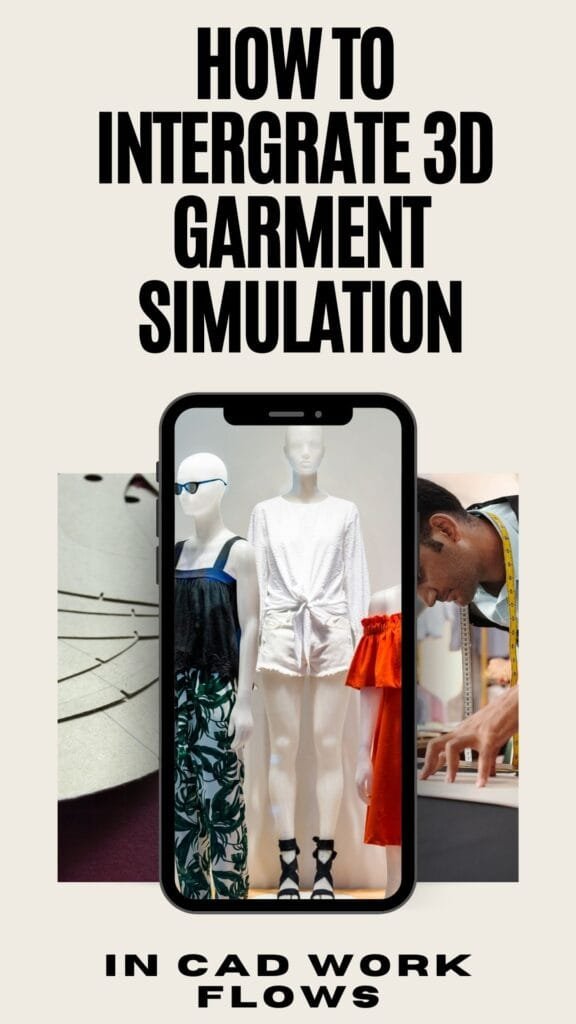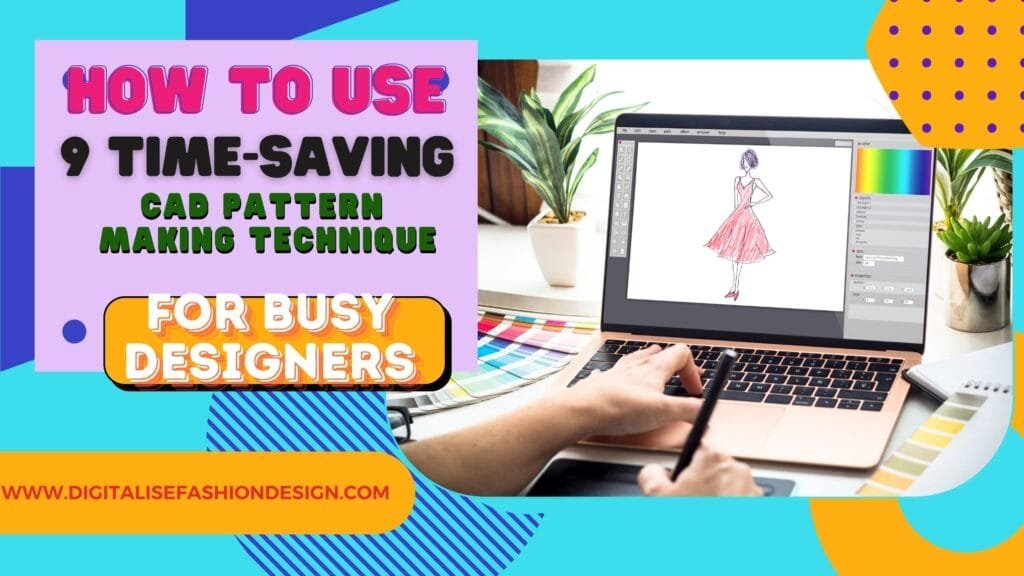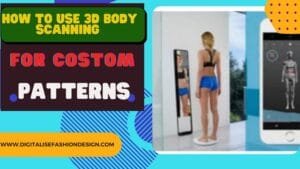Introduction

3D garment simulation is a technique that never ceases to amaze me.
In today’s fast-paced fashion industry, the process of turning a design sketch into a final garment has dramatically evolved.
The integration of technology in fashion has pushed the boundaries of creativity, speed, and precision.
Among the most revolutionary advancements is the use of 3D garment simulation, a technology that allows designers to create, test, and modify clothing in a virtual environment before a single fabric cut is made.
This leap is not only transforming how garments are designed but also how they are produced, fitted, and marketed.
What exactly is 3D Garment Simulation
3D garment simulation refers to the digital process of designing clothing patterns and seeing them come to life in a virtual space.
By using Computer-Aided Design (CAD) software, designers can now move beyond 2D sketches to create realistic 3D models of garments, simulating how fabrics will drape, stretch, and interact with different body types.
Unlike traditional methods, which rely heavily on physical prototypes, 3D garment simulation allows designers to make adjustments on the fly without the need for physical samples.
How exactly does 3D simulation work?
At its core, this process combines fabric physics with advanced CAD technology to create highly accurate virtual models.
The process starts with designing the garment using a pattern, either created digitally or imported into the system.
The designer can then apply fabric properties like weight, elasticity, and texture, which influence how the garment behaves on a virtual model, or avatar.
Virtual Fit Testing
One of the key benefits of this process is virtual fit testing, which allows designers to simulate how a garment will fit on different body shapes and sizes.
This feature eliminates the need for multiple physical samples and significantly reduces the time spent on adjustments.
Virtual fit testing helps pinpoint issues with sizing, draping, and fit before production even begins, giving designers the opportunity to refine their designs in a fraction of the time.
Digital Product Samples
Gone are the days when designers had to wait weeks for a physical sample to be made and shipped.
With digital product samples, teams can share lifelike virtual representations of garments with stakeholders across the globe.
These samples look and move like real fabric, offering a sustainable and cost-effective way to review designs.
This process reduces textile waste and ensures quicker turnaround times, keeping up with the fast-changing pace of fashion trends.
The Benefits of Integrating this process into CAD Workflows
When 3D garment simulation is incorporated into a CAD workflow, the entire design process becomes more streamlined. Here are some of the standout benefits:
Faster Product Development Cycles
Designers can now go from concept to prototype in a matter of hours instead of weeks. The ability to rapidly iterate designs and test different styles significantly speeds up the design cycle.
Reduced Material Costs
Since there’s no need for multiple physical prototypes, designers save on fabric and production costs. This makes the overall process more cost-effective while also reducing waste.
Enhancing Creativity and Innovation
With this process, the possibilities are limitless. Designers can experiment with complex cuts, fabric combinations, and patterns that would be difficult or costly to prototype physically.
Improved Collaboration
With a fully digital process, collaboration between teams becomes seamless. Designers, product managers, and manufacturers can all work on the same virtual model, providing real-time feedback.
Iterative Design Exploration
3D garment simulation allows for rapid iteration and design exploration.
Designers can experiment with multiple variations of a single garment in a short time, getting immediate feedback from teams or even potential customers. This iterative process fosters creativity, enabling designers to take risks and push the boundaries of fashion without the delays caused by traditional methods.
How 3D Garment simulation improves the Customer Experience
One of the most exciting uses of this process is in enhancing the customer experience.
Brands can offer consumers virtual try-ons, allowing them to see how a garment will fit before making a purchase.
This technology also opens up opportunities for customization and personalization, where customers can tweak details like color, fabric, or fit to suit their preferences, making their shopping experience more engaging.
Challenges of implementing 3D Garment Simulation.
As with any technology, there are challenges to adopting this technology, especially for smaller businesses or brands with traditional processes.
High Initial Costs
The software and hardware needed for this process can be expensive upfront. Brands must also invest in training their design teams to fully utilize the technology.
Learning Curve for Designers
Transitioning from traditional design methods to 3D garment simulation requires a new set of skills. Designers must be trained in both CAD and fabric simulation software, which can take time and resources.
Integration with Existing Systems
Ensuring that the new 3D garment simulation tools work well with a brand’s existing CAD systems and production workflows can be tricky. A smooth integration requires careful planning and often some customization.
Overcoming the Challenges
While the initial investment can be daunting, there are ways to make 3D garment simulation more accessible.
Many software providers offer training programs and scalable solutions to fit smaller businesses. Additionally, partnerships between industry leaders and smaller brands can help spread the cost and ease the transition.
OTHER INTERESTING BLOGPOST
Key Technologies Powering 3D Garment Simulation
Several CAD software platforms are leading the charge in 3D garment simulation, such as CLO 3D, Browzwear, and Optitex Audaces fashion studio
These platforms use advanced algorithms to simulate fabric behavior with high accuracy.
As artificial intelligence (AI) becomes more integrated into fashion design, the technology powering these simulations is becoming even more sophisticated.
The future of 3D Garment Simulation in the fashion Industry
The future of fashion is undoubtedly digital.
As 3D garment simulation continues to advance, we can expect more brands to adopt this technology, resulting in more efficient and sustainable fashion production.
Mass customization, where every customer can have a garment tailored to their exact measurements and preferences, may become the norm.
Case Studies
Several brands are already reaping the rewards of integrating 3D garment simulation.
Companies like Nike and Adidas have successfully used this technology to streamline their design processes, reducing development times and creating innovative products faster than ever before.
Conclusion.
The integration of 3D garment simulation into CAD workflows is transforming the fashion industry. It speeds up product development, reduces waste, and enhances creativity, all while providing better fit and customization options for consumers. As more brands adopt
this cutting-edge technology, the future of fashion looks more innovative and sustainable than ever.
FAQs
What is the difference between traditional CAD and 3D garment simulation?
Traditional CAD designs in 2D, while 3D garment simulation allows for lifelike digital garment modeling, including fabric behavior and fit.
How does this reduce production costs?
It eliminates the need for physical samples, reducing material waste and shortening design cycles, which in turn lowers production costs.
Can smaller businesses adopt this process?
Yes, many software providers offer scalable solutions and training programs tailored to smaller businesses.
How long does it take to implement this process in an existing workflow?
Implementation can vary but generally takes a few months, depending on the complexity of the existing systems and the level of staff training required.
What are the future trends in 3D garment simulation?
Expect more integration with AI, advancements in virtual try-ons, and increased use of this technology for mass customization.








